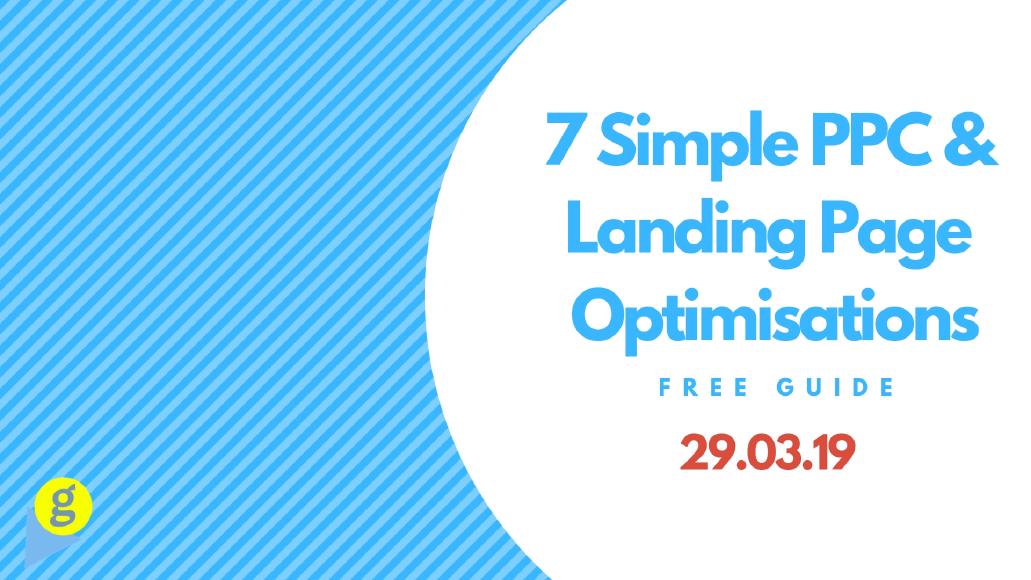Unfortunately, because PPC is so perfectly efficient there is a lot of competition – after all, who doesn’t want qualified visitors with a high-intent of purchasing on their site? Competition drives up cost because it’s set against the background of an open-auction with bidders attempting to out-bid one another for the same audience.
Fortunately, there are a number of little techniques and tricks you can use to beat out your competition and get some fantastic PPC results. Some of these techniques take a little more effort than others but the results are truly worth it.
So, without further ado here are my tips for getting more leads from your PPC campaign and Landing pages.
1. Optimise your Landing page for mobile
In 2015, more Internet searches occurred on mobile than desktop. This landmark event represented a huge shift in how people are interacting with PPC advertising:
Since 2015, those using their mobile devices to search for products and services online has continued to increase. At the beginning of 2015 mobile internet users represented 31% of all internet traffic and at the end of 2018 it represented almost 50%. That’s a huge increase.
The dramatic change in device usage has directly impacted how users interact with PPC campaigns because audiences change their behaviour based upon the device they use.

At this point in time (2019), mobile ad spend tops £85 billion and accounts for over 50% of all PPC ad spend.
What does this mean? Well, it means that over half of the clicks you receive through your PPC campaign are using mobile devices.
Mobile advertising is a very different beast than desktop advertising and means that the earlier you can adopt an effective mobile PPC strategy, the more clicks you will take from the competition.
On mobile, it’s more important that you see your advertisements place in positions 1-3. Why? Well, the odds of having your advert seen on mobile below these positions is far less likely. To see how your adverts are performing on desktop vs mobile, try segmenting your campaign data by device.
Furthermore, it’s also pretty critical to design your landing pages to change their layout/design to better fit smaller screens. Ensuring your landing pages are ‘responsive’, ensures they appear correctly on mobile devices like iPhones and iPads.
Responsive website design is great but it’s not the only thing that you want to do with your landing pages. You also need to design them specifically for mobile users – if they aren’t, Google may penalise you making it harder to get your ads into position 1-3 and reducing traffic to your landing page.
Really, if you’re thinking about designing a PPC campaign, you need to think about mobile AND desktop experiences. Optimising for mobile just isn’t enough these days – you need to build for mobile.
2. Retargeting
Visitors will leave your carefully designed landing pages without converting for all sorts of reasons. Looking at your landing page bounce rates may not tell you much about your page of your offer.
Whatever the specific reason, most of the time, when someone leaves your landing page, they never come back.
If they were originally interested, if only there was a way to draw them back in and have another swing at converting them.
‘Hello Re-targeting’.

Retargeting is simply the process of placing a cookie on the browser of your visitor and showing a sign that says ‘Hey, come back and take another look’.
Using this cookie, you can make sure that wherever your visitor goes, you can offer a gentle reminder that your business exists and what you offer. It really just reminds them of how great your brand is and how well you can solve their problem.
Retargeting is an incredible tool to use to improve your PPC advertising performance. We use retargeting to improve our conversion rate – after we launched ours, our inbound leads volume shot up by 64%.
Retargeting clicks usually cost a few pence per click; virtually nothing. Every PPC campaign can be improved by using retargeting. As it costs next to nothing, it’s something which should be a no-brainer for most.
3. Start with social, sell with search
When you say PPC, you instantly think of paid search. As great as Google Ads and Bing Ads are, paid search is not the only effective PPC medium.
Paid search is usually a low funnel advertising tactic which targets specific types of people who realise they have a problem and are searching for a solution.
Your paid search may be ready to buy, but they only really represent a small portion of the people who might benefit from your product or service.

Lower funnel leads are usually the most expensive because they have the highest intent of purchasing something. The higher up the funnel you go, the higher up the leads but the less intent there is. For example, low funnel leads will search for ‘buy coats today’. A higher funnel lead may search for ‘coat styles’.
To try and target the rest of your potential buyers (the higher funnel folks), you have to advertise in a few other places.
Using paid social promotion to build awareness for your brand is a great next step. Once they’ve visited your website, you can use retargeting to remain in front of them until they eventually come back and convert.
Retargeting adverts have a 2-3x higher click-through rate and around a 33% lower cost-per-click – a strategy encompassing this can produce more traffic at a lower cost.
For a bonus round, people are more likely to buy from someone they are familiar with – Guess what helps build familiarity? Seeing the brand frequently in a variety of places. Bingo! This tactic takes a little effort and a fairly long time to implement but it can produce a ton of value!
4. Bid on your competitor’s branded terms
If you aren’t bidding on your competitors branded terms, in all likelihood they’re probably bidding on yours.
Why would you do that? People who search for competitor branded terms are a great source of PPC landing page traffic – it works for you and your competitors. It works because the searcher is clearly in the market for services like yours (and your competitors) and so are lower down the funnel that others.
What’s the key here? Well, bidding on your competitions branded terms allows you to get in front of potential customers who may be leaning towards someone else product but would still benefit from yours. If you draw them in, you’ll need to next convince them to why you’re better and further service them compared with the competitor.
Most people like to weigh if they’re making the right decision. Seeing what competitors can offer is valuable to them and helps them make an informed decision whilst also giving you the opportunity to convert them.
If you set up your landing page effectively, there’s a good chance you’ll be able to convince the competitions potential client’s that they (and rightly so) choose your business instead.
5. Use in-market audiences
Statistically, you’re more likely to have a heart attack than click on a banner ad. What?
As depressing as this statistic is, it shouldn’t be a huge surprise. Back in the day, banner ads were the medium to use. Now-a-days, banner ads are often poorly designed and even more poorly targeted resulting in banner ads showing up which aren’t relevant to you nor offer any tangible value to you.
Putting a banner advert in front of the wrong audience is a super way of losing your marketing budget and having nothing to show for it.
How do you do it correctly? How do you get your banner ad to display on the right places which plays host to your perfect customer?
One option is to use Google’s In-Market Audiences.

In-market audiences target users within specific verticals who are in a buying cycle. In other words, it targets the folks you want your ads to be shown to.
Let’s say, for example, that I’m researching buying a scooter. You could use in-market audiences to target me with ads about buying a new scooter. That instantly increases the chances of your ad catching the eye of a budding buyer.
What do the results look like? Well, businesses like Toll Brothers and Wayfair have seen 20% improvements in ad response rates and a stunning 50% lower acquisition cost. If you combine this with remarketing (above), in-market audience targeting could triple your click-through-rates. Amazing.
6. Gmail Sponsored Promotions
Have you heard of GSP? Google released Gmail Sponsored Promotions (GSPs) last year. GSP’s allow you to take your display advertisements and show them based upon the emails they have from other sources. This makes it a great way of getting in front of potential customers when the product or service is front of mind. Imagine your audience reading through an email about the virtues of commuting to the office on a scooter, then seeing a link to a business which provides affordable scooters with free delivery.
Advertising is a little bit expertise, a little bit lucky but mostly about getting your business in front of someone at the right time. GSP is an exceptional way of hitting those last two far more frequently than on other mediums.

There’s a good chance that because this is a new channel in Google Ads, your competitors haven’t started using it yet. Even if your competitors are using this strategy, at least you will be too – not missing out on any potential clicks.


